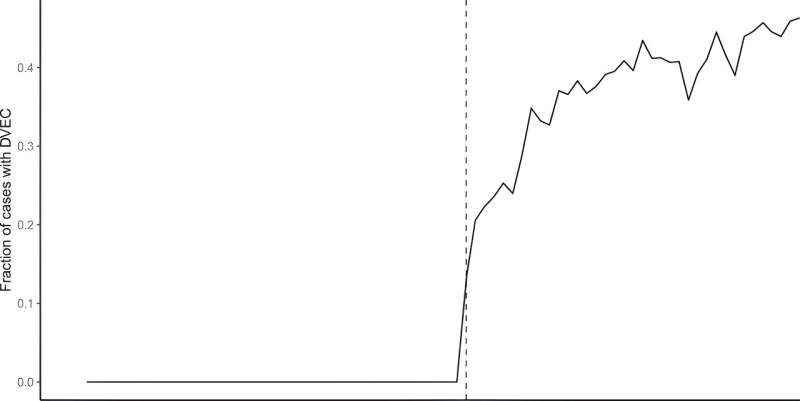This article has been reviewed according to Science X's editorial process and policies. Editors have highlighted the following attributes while ensuring the content's credibility:
fact-checked
trusted source
proofread
Domestic violence in Australia: Convictions more likely with pre-recorded evidence

A new University of Sydney study reveals a 3.4 percentage point increase in the conviction rate in domestic violence cases that use pre-recorded evidence. The Australian Economic Review has published their results.
Implemented in 2015, the Criminal Procedure Amendment (Domestic Violence Complainants) Act I allows domestic violence victims to present their evidence via a pre‐recorded video statement with police, instead of live in court. The purpose of the law is to encourage victims to give evidence, which in turn could increase prosecution and conviction rates.
Compared to other violent crimes, domestic violence cases tend to have low conviction rates. Between 2015 and 2018, for example, domestic violence matters only had a 77% conviction rate, while non-domestic violence matters had a 92% conviction rate.
The new research demonstrates that the 3.4 percentage point increase in the conviction rate for matters with pre-recorded evidence occurs in three ways: first, there is a higher likelihood of conviction among cases that go to a defended hearing (5.6 percentage point increase); there are more guilty pleas (2.4 percentage point increase); and the prosecution is 2.4 percentage points less likely to withdraw their case.
"I hope the NSW Police Force continues to implement approaches that take victims' experiences into account," said Mr. Yeong, from the University's School of Economics.
Though the study's findings were associative, not causal, other, qualitative studies have been done that mirror them.
Along with colleague Suzanne Poynton, Director, Research and Evaluation at NSW Bureau of Crime Statistics and Research, Mr. Yeong derived the results using three datasets: the 2011 ABS census; the NSW Bureau of Crime Statistics and Research's Reoffending Database; and the NSW Police Force's Computerized Operational Policing System. The researchers examined cases involving at least one domestic assault charge laid between 1 January 2012 and 30 June 2018, almost a quarter of which involved pre-recorded evidence by the victim.
In Australia, it is estimated that close to one in four women has experienced at least one instance of domestic violence since the age of 15 (ABS 2017). The national cost of domestic violence over the 2015–16 financial year was estimated at $22 billion (KPMG 2016). To put this figure in context, the size of the Australian Government budget deficit over the same period was $39.6 billion (Commonwealth Treasury 2016).
More information: Steve S. Yeong et al, Can Pre‐recorded Evidence Raise Conviction Rates in Cases of Domestic Violence?, Australian Economic Review (2023). DOI: 10.1111/1467-8462.12525
Provided by University of Sydney



















